Exploring the Intersection of AR/VR and eCommerce in Web Development
 Hire Remote Developers
Hire Remote Developers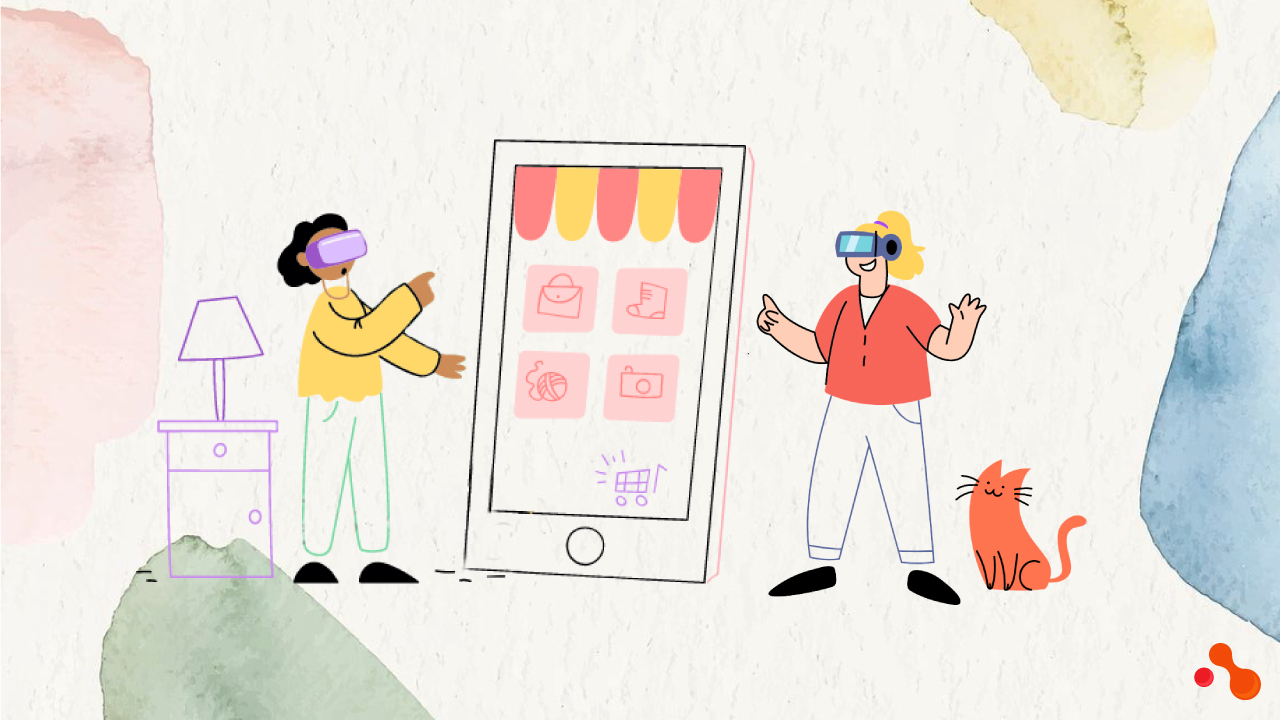
Introduction
Augmented Reality (AR) and Virtual Reality (VR) are rapidly expanding technologies that are transforming how people see and interact with the world. Like any new technology, there are questions about how it will affect society. AR/VR has already changed the way that eCommerce is conducted. There's the certainty that it will continue to change the way we shop as more companies look at ways to integrate this technology into their websites.
New technologies are introduced yearly, and a wide range of technologies and trends are used yearly to develop websites. Below is a listing of a few of them:
Artificial Intelligence
Virtual Reality
Augmented Reality
Blockchain Technology
Voice User Interfaces (VUI)
Natural Language Processing (NLP)
Internet of Things (IoT)
Headless CMS
This article explains the ways AR/VR technology will affect eCommerce website solutions.
Augmented Reality and Virtual Reality are Both Rapidly Growing Technologies
Augmented Reality, as well as Virtual Reality are both rapidly expanding technologies that are rapidly growing. With the introduction of AR/VR, technology is evolving at an alarming speed, and it will only accelerate as these technologies become more widely used and accessible. Augmented Reality (AR) allows users to view virtual objects in real-world settings via their devices, including tablets or smartphones. They can also be interactive, allowing users to interact with them as with any other object they encounter daily.
Businesses can offer immersive experiences to customers needing help accessing their physical stores due to distance or time limitations. This could range from selling goods online using AR technology instead of traditional methods (e-commerce) and advertising campaigns targeting specific segments based on where those populations reside geographically to enabling companies to contact them directly through mobile devices instead of relying on print ads alone.
Here are some statistics that support the idea:
The market value of AR retailing in 2021 was 1.9 Billion in 2021, and it is expected to grow to 2.5 Billion by 2023.
The size of the market for VR retail was estimated at 2 billion in 2021, and it is expected to grow to 2.5 Billion by 2023.
The global size of the AI market for 2023 is 8.49 Billion dollars.
70% of those who have purchased through VR Stores have purchased. VR Store has purchased.
IKEA has adopted AR/VR technology in a major way that allows customers to use this technology to find the most desirable furniture.
Additionally, Amazon has implemented Augmented Reality, allowing customers to purchase more efficiently.
BMW, as well as Lenskart, have also adopted this technology in conjunction with BMW offering a virtual tour of their vehicle, and Lenskart allows you to test various products for your eyes.
How Will It Impact Society?
Like any new technology, there are worries about how it will affect society. Here are a few of the ways AR/VR could alter our lives:
It could make shopping more convenient and enjoyable as people become used to observing items in 3D before purchasing them and are less likely to look for stores in physical form or catalogs.
It could make traveling more exciting and immersive than ever by taking us to other destinations without leaving our homes (or even our bed).
It could transform education by allowing students to participate in virtual classrooms that allow them to interact with teachers and fellow students worldwide and even visit historical sites such as Mount Everest or ancient Rome!
What is AR in Website Development?
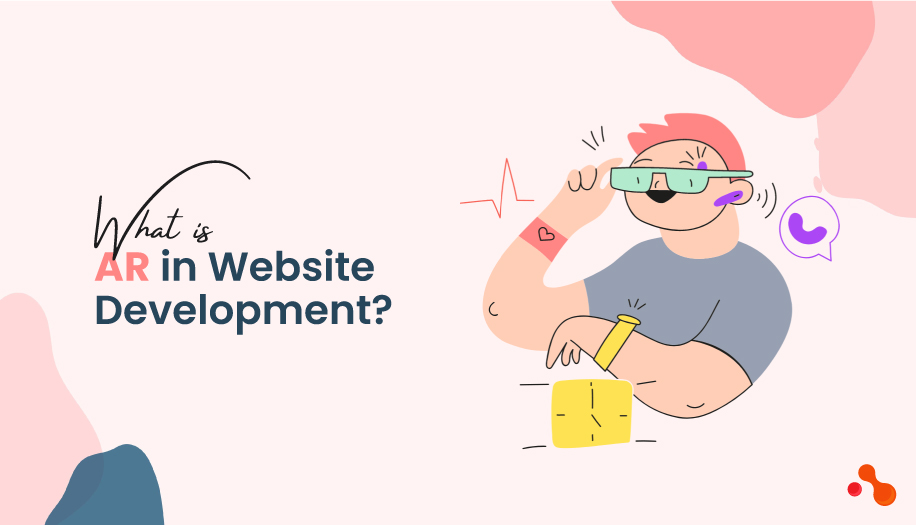
AR is an interactivity technology that lets users communicate with their environment via devices like smartphones. It improves the user experience by putting layers of information over real-world environments and allowing users to interact with their surroundings innovatively.
Retailers typically employ augmented Reality as a part of their marketing campaigns; however, there are other ways to utilize it to enhance eCommerce.
What is VR in Website Development?
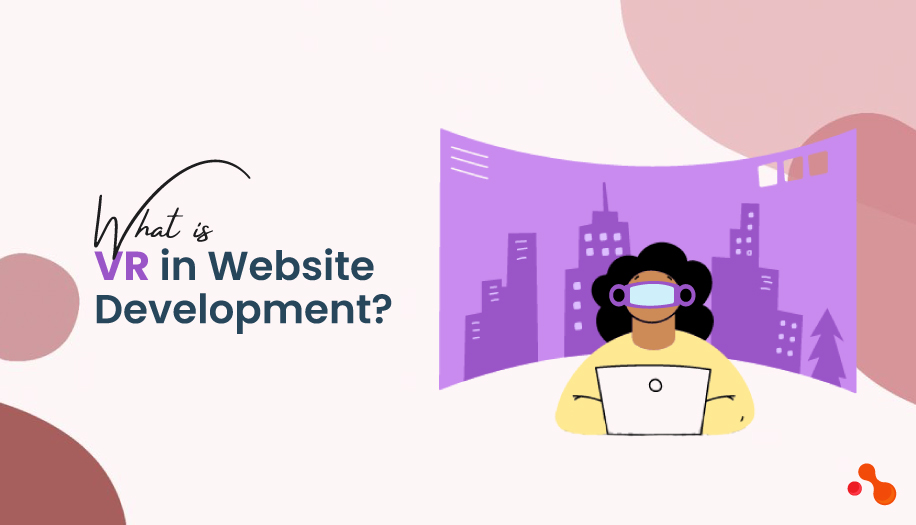
VR is a computer-generated virtual environment that is experienced using VR headsets. It's also referred to as 3D immersive or immersive. When you browse an online site on your smartphone and view an image of products available for purchase, you can view them in 3D by wearing your VR goggles.
AR/VR is Already Changing eCommerce in Many Ways.
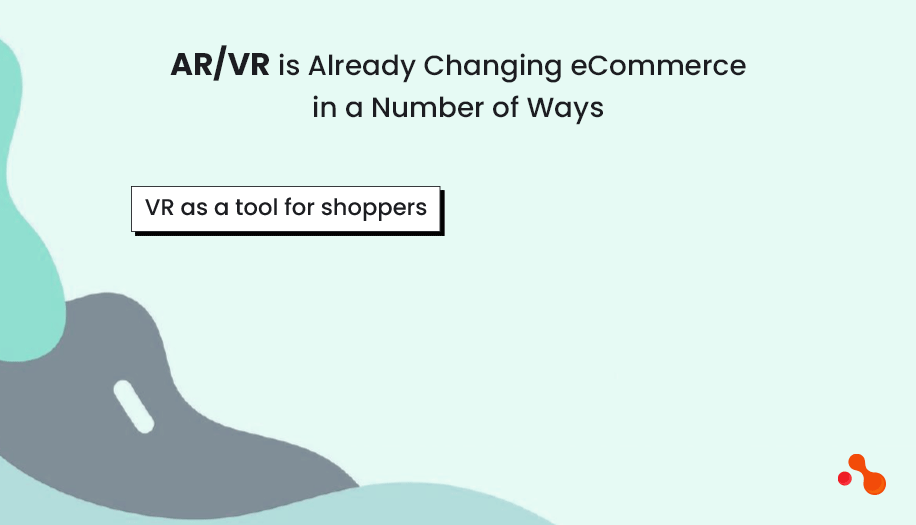
AR/VR is already changing how we shop online in various ways. One of the most evident is that it can improve customer satisfaction by allowing customers to view what they're buying before they purchase it, which helps them feel more comfortable about their purchase and less likely to return a product if they don't like it after receiving it. When customers have this type of control over the shopping experience they have, they're more likely to be able to trust your online store and will continue to shop with you.
Another way that retailers can utilize AR/VR is to offer customers an improved shopping experience by browsing through their mobile app or website. And even better: You don't require additional equipment or software! This functionality is made possible by embedding video players in websites using HTML5 tags for video (or via WebGL).
It's not a secret that eCommerce is among the fastest-growing sectors in the world. According to HubSpot, the e-commerce industry accounts for 8% of retail sales worldwide and is predicted to reach 4 trillion dollars by 2020. This growth rate shows little indication of slowing down anytime soon, making it a great time for retailers to get involved. What exactly does AR/VR technology impact the way customers shop? How do these changes impact you as retail store owners? Let's look at the following:
VR as a shopping tool VR is a device that lets shoppers explore products in a virtual setting. It is a great tool for sensory and visual experiences like viewing a product's appearance in your home or on you. VR lets you visualize how products appear in various light conditions and settings. This can assist customers in making better decisions about buying concerning how they intend to use the product. For example, if someone intends to use the ironing board in their room late at night after work and would like it to be close to their bed to ensure they aren't forced to walk across the room while getting dressed or changing their clothes, They might prefer something smaller than they normally would.
AR as an option for buyers: You can utilize AR to showcase your product's surroundings and use it by a real buyer. It is also possible to show buyers what the item will appear on them if they purchase it and wear it themselves. This is a great option for clothing stores that wish to let their customers be able to see how their clothes look before buying them on the internet or from the store.
VR as a marketing tool VR can be utilized as a marketing tool that promotes brands, products, services, and experiences.
Product VR is a great way to showcase brand-new items in a manner that is more engaging than videos or static images. You can zoom in on details and learn how things function without needing to touch them. This is especially helpful when you're selling a complex product such as electronics or furniture because it lets customers examine your product before deciding to purchase it, which they can't be able to do by perusing pictures on your website or a store display in the window.
Brand: Creating a perception that you are an expert in your area by displaying your brand's uniqueness will make customers trust your business regarding their money (and time). By creating immersive experiences about what sets you apart from the rest, whether it's quality craftsmanship or environmentally friendly materials--you'll draw more customers looking for the same characteristics in their purchases, too!
AR as a marketing tool AR is a highly effective tool that lets you visualize what a product would look as it would look in your own home. For instance, if you want furniture online and want to know how it will look in your living space or bedroom, AR can help you visualize this.
With smartphones that support AR, customers can use their cameras to view 3D models of items superimposed over real-world scenes they snap pictures of using their smartphone camera. These technologies are beginning to transform the ways we shop. VR and AR are changing how we purchase goods and services and how businesses engage with customers. It's not just about purchasing; it's as well about selling. The usage of VR/AR within the world of e-commerce has been on a rising trend since 2016, with over 1 billion customers using it at least once a month until 2022 (IDC).
Although these technologies are in their early stages, they've already begun to alter how we shop. Brands and retailers must seek methods to include these innovative technologies in their marketing strategies for both the short-term benefits and long-term rewards that could be derived from the integration of VR and AR.
Benefits of WebAR

An increase in sales
Customer engagement is growing.
Brand awareness increases
Customer loyalty is growing.
Increase the return on investment (ROI) and brand image.
What does the future Bring for eCommerce and AR/Vr?
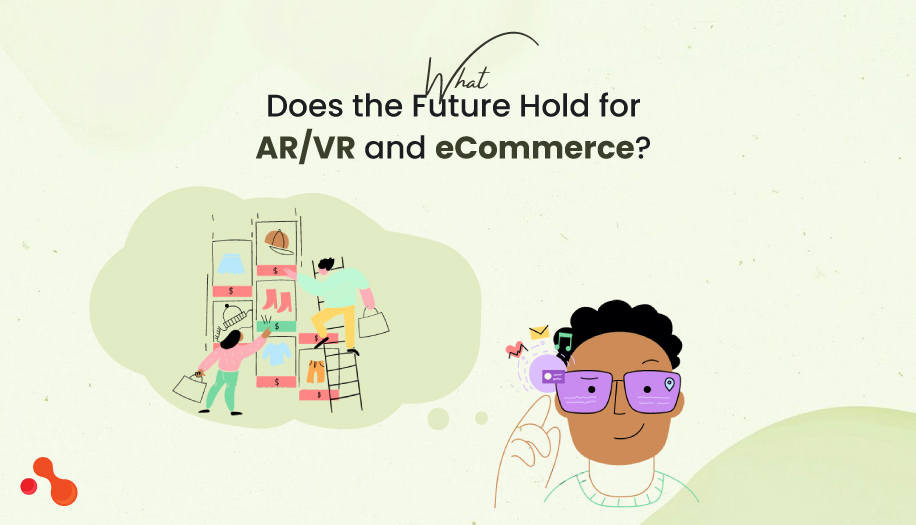
Acquaint Softtech is a reputable software development company with the resources to offer new-generation solutions. We have the experience and experience to create top-quality AR/VR eCommerce solutions, such as websites and mobile apps.
AR/VR is expected to continue to grow in popularity and use. As we've seen over the last few years, AR/VR is becoming more accessible to people of all ages. With Facebook's Oculus Rift and Google's Daydream View headsets already on the market, it's only a matter of time until other companies develop products that allow anyone using an iPhone or Android to experience VR on their mobile devices.
AR/VR can be used in a wide range of industries. As more people embrace these technologies, they will likely be used in areas other than gaming and entertainment. Some examples include healthcare (medicine) and education (science) as well as real estate (construction) as well as travel and hospitality (travel planning), and agriculture & forest management, etc. There are many possibilities!
AR/VR will be a part of our daily lives as cell phones did 20 years ago when anyone had one. However, most people carry them all the time, regardless of whether they require the device, merely because they make us feel more secure, even though crime rates have dropped substantially since then.
The market value of VR Retail is expected to increase to 4.5 billion by 2028, and the AR market to 6.1 Billion.
AR/VR is the perfect technology to get an advantage over your competitors. Contact us now; the Acquaint Softtech developers stay current with the latest technological developments.
Common Applications of AR/VR for eCommerce Websites
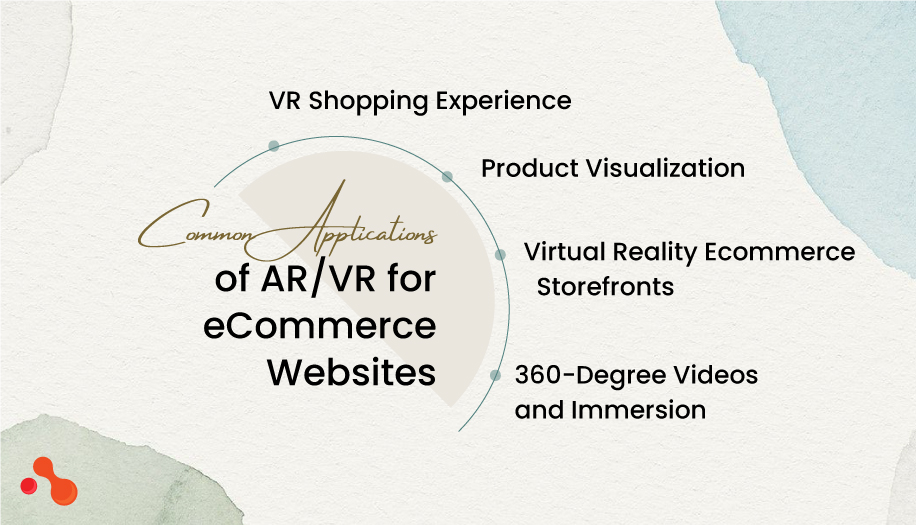
The eCommerce industry is constantly changing. Due to recent advances in technology, we've witnessed an increase in AR (AR) and Virtual Reality (VR) utilization. These technologies have many possibilities for online stores, such as increasing customer engagement and experience, showcasing products with immersive images, and more. Explore these four ways AR/VR can be integrated into your eCommerce website development today!
VR Shopping Experience
Virtual reality shopping is a brand-new method of shopping.
VR shopping is a great way to try on clothing and experience the clothes in 3D.
VR shopping lets you experience products in their context, such as how a furniture appears in your living room.
Product Visualization
Product visualization is an excellent method of displaying your product virtually. It lets you show the product in a live environment that can help convince your customers to purchase it.
For instance, visualization of your product could be helpful when you're selling furniture on the internet and need to convince customers that your new sofa will look amazing in their living space. The buyer can see how the sofa fits into the space and test the furniture before buying it (if possible).
Virtual Reality Ecommerce Storefronts
Virtual Reality (VR) eCommerce storefronts are a fantastic way to connect with customers and offer the most immersive shopping experience. Even though VR is in its infancy, the technology could become the norm for online shopping in the next 10 years.
Besides being used in eCommerce stores, virtual reality storefronts may enhance the brick-and-mortar retail experience. A VR storefront enables customers to view products from different angles and has an idea of what they appear like in person before they purchase. This lets them make better choices when purchasing things that can't be returned, like appliances or furniture.
360-Degree Videos and Immersion
360-degree videos are a fantastic way to showcase your products and features. They let you make your customers feel part of your brand's story, whether inside the company or through an experience they otherwise would not be able to enjoy.
However, these videos are less immersive than VR since they are only available on mobile devices and do not give users full control over the direction they view them (as opposed to VR headsets).
VR headsets let users feel inside the same room as the product by allowing them to control their view and making it appear like there's nothing in their surroundings. This creates a strong connection between the customer and the brand!
The main takeaway of eCommerce is that AR/VR is a great tool for creating an immersive shopping experience. It lets you see what the product will look like in your home and then show how it will look in a way that might never be feasible in the real world.
There are many ways to incorporate AR/VR technology into your eCommerce website development. It can create a more immersive shopping experience and see areas and products in 360-degree and 3D videos. The possibilities are limitless!
Conclusion
The potential for integrating AR/VR into eCommerce is huge. It could improve customer experience, increase sales, and boost brand awareness. In fact, according to a report from Goldman Sachs Research, the global market for AR (AR) will be worth $183 billion by 2025. As more companies start to look into ways to integrate AR/VR into their website, we suggest you profit from this growing trend!
The possibilities for AR/VR technology to transform eCommerce are huge. With technology continuing to develop and develop, we will see a plethora of applications that retailers and web developers can utilize. The main point to take away is that if there's a reason you are interested in exploring AR/VR, this is the right time to do it, and Acquaint has the right team of specialists to assist you in developing a customized solution.
FAQ
What is an AR/VR eCommerce solution?
A solution for eCommerce that uses AR/VR is a platform that integrates augmented reality (AR) and virtual reality (VR) technologies with eCommerce capabilities. It allows online merchants to offer their customers interactive and immersive shopping experiences. Through AR and VR, shoppers can experience the items in a virtual setting and try them on or observe how they appear in their actual space before making a purchase.
What are the advantages of utilizing AR/VR as an eCommerce option?
The advantages of an AR/VR eCommerce solution are:
A better customer experience technology provides an immersive and engaging experience that allows customers to interact with the products more authentically and personally. This can result in increased satisfaction of customers and better conversion rates.
Improved product visualization: AR/VR lets customers see the products in a virtual setting, giving them a greater understanding of the size scale, design, and size. This reduces the chance of a return due to incompatible expectations.
Virtual try-on and personalization: AR/VR lets customers virtually try on items like clothes, accessories, clothing, and furniture. It also allows customers to customize products according to their preferences and view them in real-time.
Reduced returns and higher sales AR/VR solutions can reduce the number of returns due to unmatched expectations by providing a more accurate representation of the product. A more immersive experience and increased purchase confidence could result in higher sales.
Competitive advantage: Using AR/VR in eCommerce can distinguish your company from its competitors since it provides unique and innovative shopping experiences. This will draw new customers in and keep existing customers.
What kinds of businesses could gain from an AR/VR eCommerce platform?
Many kinds of companies can profit from an AR/VR eCommerce solution, such as:
Retailers of clothing and fashion Customers can virtually test-drive clothing and accessories or play around with different types and designs.
Furniture and home décor stores AR/VR lets customers imagine furniture in their home and observe how it fits and compliments their decor.
Brands of cosmetics and beauty Customers can virtually try makeup products, play with various shades, and see how they appear on their faces.
Automotive industry: Customers can discover and personalize vehicles, see different colors and configurations, and take virtual test drives.
Jewelry retailers: AR/VR lets customers test virtual jewelry pieces and check how they look and feel.
These are only some examples; however, AR/VR solutions could be applied to various industries where the ability to see and experience products is crucial.
What characteristics should I look for in an AR/VR eCommerce system?
If you are considering an AR/VR eCommerce system, the essential features to consider include:
Realistic visualization of products The solution should offer realistic and high-quality visualizations of virtual products, assuring an accurate representation.
Virtual test-on capabilities: For industries like fashion, cosmetics, or fashion, the software should support virtual try-on, which allow clients to view how their products look within their environment.
Customization options: If they apply to your company, the software should provide options for customization, allowing customers to personalize their products according to their preferences.
Cross-platform compatibility: The solution must be compatible with various platforms and devices, such as tablets, smartphones, and VR headsets, to bring the solution to a wider audience.
Integration with eCommerce platforms: Ensure the solution seamlessly integrates with your current platform or capabilities.
Analytics and data insights: Search for products that provide analysis and tracking of data, which provide insight into customer behavior preferences, preferences, and engagement.
Support and scaling: Take into consideration scalable solutions
Subscribe to my newsletter
Read articles from Hire Remote Developers directly inside your inbox. Subscribe to the newsletter, and don't miss out.
Written by

Hire Remote Developers
Hire Remote Developers
Hi, I am Mukesh Ram I founded Acquaint Softtech with a vision to make quality developers affordable to everyone. With my blood, sweat, and tears I haven’t just been able to sustain but thrive over the years. Today, I am proud to say that we have grown to a family of over 70 awesome people and expanding quickly. Every day I look forward to uniting with my professional family to provide them the best environment to grow their careers and propel us towards fulfilling the vision of Acquaint Softtech. And crack jokes in between! On a personal front, I am a foodie and a life enthusiast who loves to live each moment to the fullest.